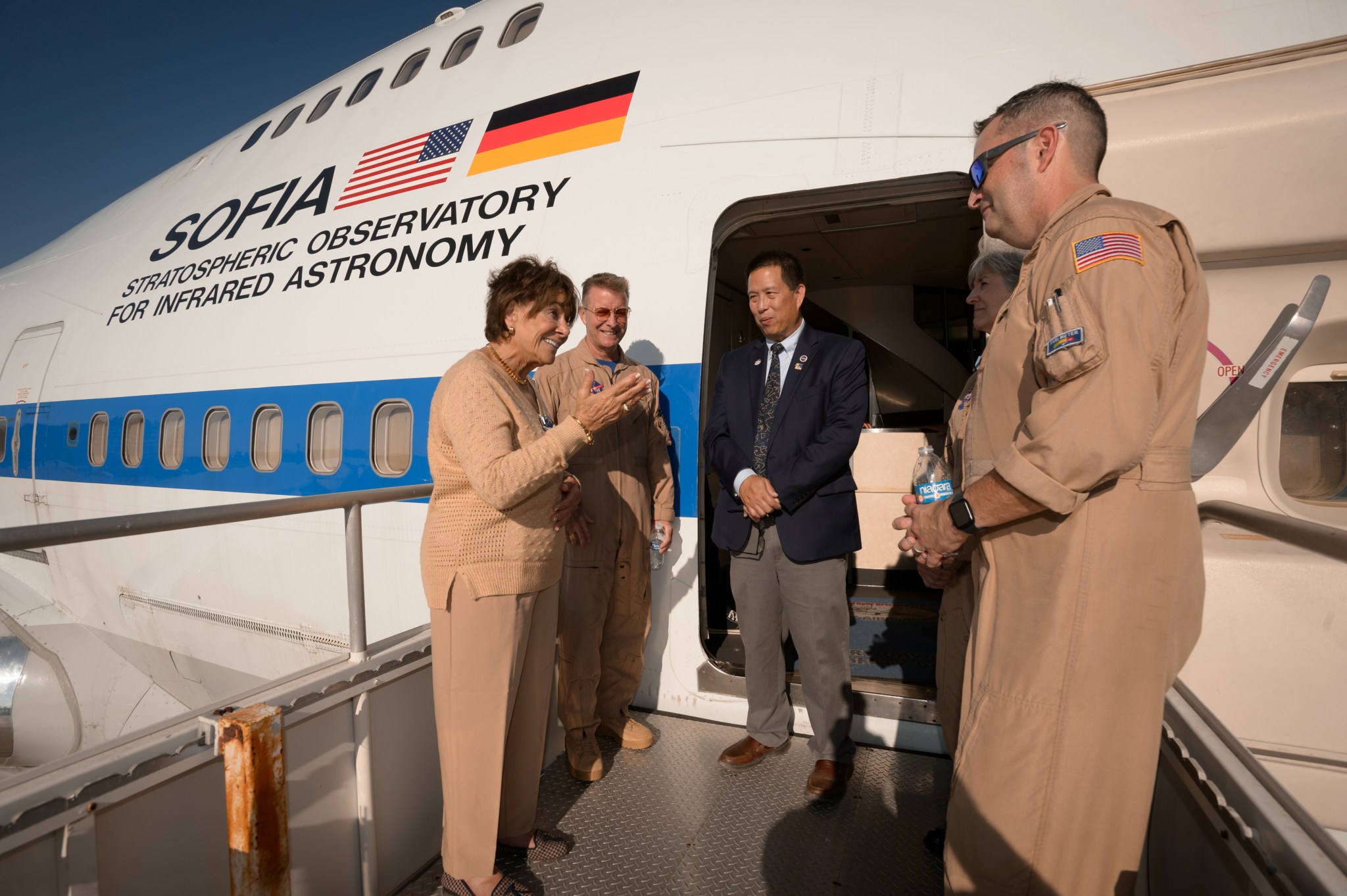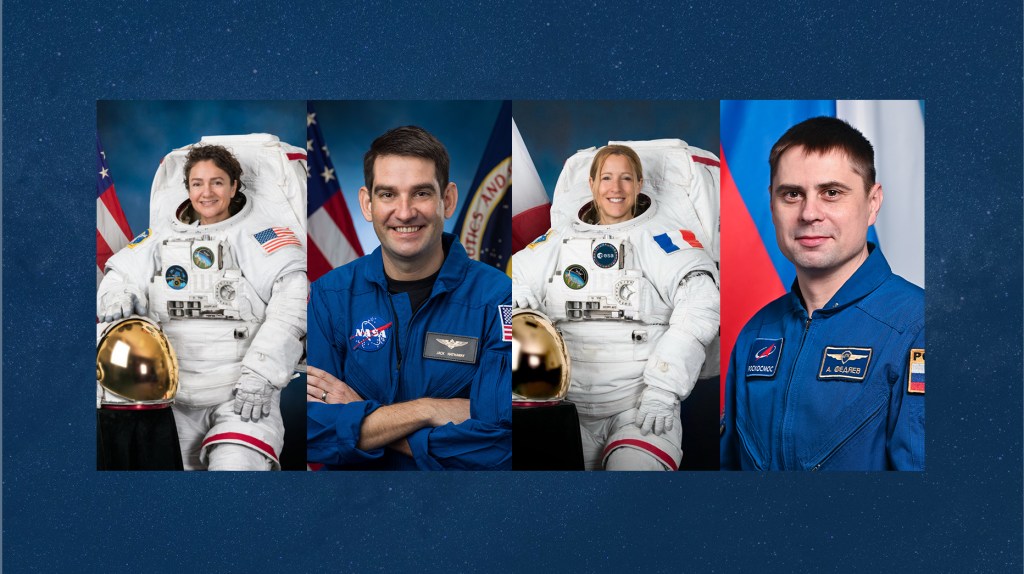
On Oct. 14, 2022, Rep. Anna G. Eshoo and Eugene Tu, center director at NASA’s Ames Research Center in California’s Silicon Valley, visited the now-retired Stratospheric Observatory for Infrared Astronomy (SOFIA) and met with a group of pilots who flew the aircraft.
The observatory – a highly modified airplane carrying a 100-inch telescope – was making its last stop at Ames, where the mission was managed. The aircraft was maintained and operated by NASA’s Armstrong Flight Research Center in Palmdale, California. SOFIA was a joint project of NASA and the German Space Agency at DLR.
“While the conclusion of SOFIA’s mission is bittersweet, I salute the superb work of the brilliant scientists and engineers at NASA who managed the project,” said Eshoo. “Over the last eight years, they have worked on this airborne observatory that has allowed astronomers to study the solar system from a viewpoint not possible from the ground, including star birth and death, black holes, the formation of new solar systems, and complex molecules in space. I’m proud to have been an unswerving supporter of SOFIA and proud of the discoveries made.”
During the aircraft’s visit to Ames, members of the SOFIA team, other Ames employees, and their families were able to say farewell to a mission supported by a great number of professionals in diverse roles, from the start of its development in 1996 to the completion of its science program with the end of science flights in September 2022.
Engineering teams at Ames played a critical role in SOFIA’s development, ensuring it could make the sensitive astronomical observations needed to conduct its science. They led the design of a door in the side of the aircraft that opened in flight to expose the telescope to the sky, operating smoothly for eight years of flights studying the universe in infrared light.
Today, SOFIA’s scientific legacy encompasses a great variety of discoveries. Over the course of the mission, SOFIA’s observations of the Moon, planets, stars, star-forming regions, and nearby galaxies included the discovery of water on the sunlit surface of the Moon.
As the flying observatory makes way for the next generation of infrared astrophysics, starting with NASA’s James Webb Space Telescope, SOFIA’s data will remain publicly available via data archives for astronomers worldwide to study and reveal more about our universe.
SOFIA was a joint project of NASA and the German Space Agency at DLR. DLR provided the telescope, scheduled aircraft maintenance, and other support for the mission. NASA’s Ames Research Center in California’s Silicon Valley managed the SOFIA program, science, and mission operations in cooperation with the Universities Space Research Association, headquartered in Columbia, Maryland, and the German SOFIA Institute at the University of Stuttgart. The aircraft was maintained and operated by NASA’s Armstrong Flight Research Center Building 703, in Palmdale, California. SOFIA achieved full operational capability in 2014 and concluded its final science flight on Sept. 29, 2022.






































